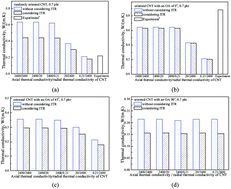Thermal conductivity of micro/nano filler filled polymeric composites
Abstract
The thermal conductivity of emulsion-polymerized

* Corresponding authors
a
State Key Lab of Metal Matrix Composites, Shanghai Jiao Tong University, Shanghai 200240, China
E-mail:
lizhiguo-77@163.com
b Hangzhou Zhongce Rubber Co., Ltd., Hangzhou 310008, China
c Harbin Institute of Technology, Harbin 150080, China
The thermal conductivity of emulsion-polymerized

 Please wait while we load your content...
Something went wrong. Try again?
Please wait while we load your content...
Something went wrong. Try again?
Z. Li, W. Wu, H. Chen, Z. Zhu, Y. Wang and Y. Zhang, RSC Adv., 2013, 3, 6417 DOI: 10.1039/C3RA22482A
To request permission to reproduce material from this article, please go to the Copyright Clearance Center request page.
If you are an author contributing to an RSC publication, you do not need to request permission provided correct acknowledgement is given.
If you are the author of this article, you do not need to request permission to reproduce figures and diagrams provided correct acknowledgement is given. If you want to reproduce the whole article in a third-party publication (excluding your thesis/dissertation for which permission is not required) please go to the Copyright Clearance Center request page.
Read more about how to correctly acknowledge RSC content.
 Fetching data from CrossRef.
Fetching data from CrossRef.
This may take some time to load.
Loading related content
